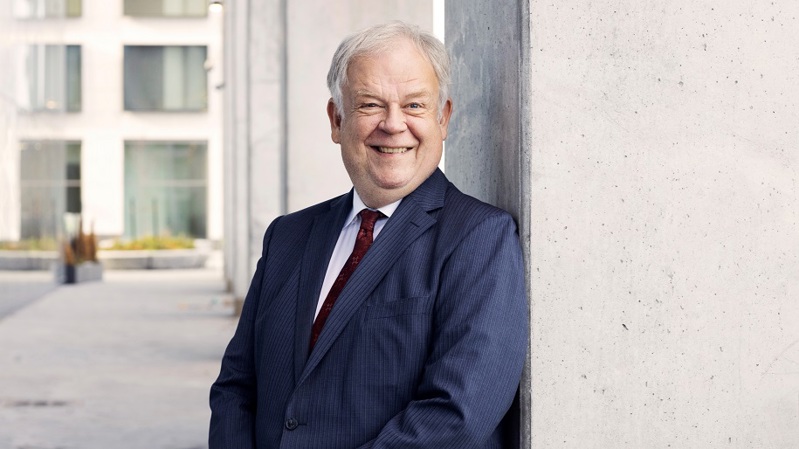Good medicine requires the right tools

Medicine, like many other sciences, is advancing by leaps and bounds. The fact that medicine guides our work means that we deliver the most effective care as recommended. This requires us to constantly evolve and keep ahead of the scientific curve, so that we can act in the best interests of our customers, using all appropriate and possible means.

Understanding better with diagnostics
In ancient times, determining the cause of a person's symptoms and the impact of treatment on their wellbeing was based on touch, sight and sound. A major paradigm shift occurred when small factors invisible to the eye, microbes, were found to be the cause of disease. The introduction of microbiology opened up a view beyond the surface and today it is estimated that around 70% of diagnosis is based on diagnostics, in practice laboratory and imaging studies.
Today, adequate and timely use of diagnostics is a fundamental prerequisite for reliable diagnosis.
Streptococcal pharyngitis cannot be distinguished from viral pharyngitis just by looking down the throat. Instead, we use laboratory tests to distinguish those who benefit from antibiotics from those who are only harmed by them. And without a laboratory test, you can't know if you're on the right track in treating your own illness. The figures show that the situation for lifestyle diseases in occupational health clients has been close to under-treatment in the past, as a survey* we commissioned last year showed that a significant proportion of occupational health clients have missed a follow-up examination for their long-term illness, thus deviating from the guidelines of the Current Care Recommendations.
At Terveystalo, we strive to ensure that the recommended care is provided by supporting our professionals with care pathways, of which more than 80 are already available to our customers. In addition to physical illnesses, we have also created care pathways to support the treatment of mental illnesses, so that everyone can access the most effective treatment as quickly as possible for the highly prevalent mental challenges.
Many eyes are better than one
The power of multidisciplinarity has also long been recognised in medicine. Put simply, it means bringing together all the experts who have something to contribute to a good outcome around the patient. In organisational cooperation in occupational health, a multidisciplinary team ensures that stress factors affecting the whole work community and potential risks to work can be tackled through preventive measures. Multidisciplinarity is also included in the treatment recommendations for individuals. For example, the Current Care Recommendation for lifestyle-induced diabetes points out that health professionals should refer patients to regular dental care and that nutritional therapy plays a crucial role in supporting lifestyle change.
Good treatment for anxiety disorders is also often multi-professional. Treatment recommendations emphasise the importance of psychosocial treatments. From our own data, we see that while more and more people are seeking our services, clients are also becoming more severely symptomatic. The good news is that despite the difficult starting point, we are also achieving better treatment outcomes.
* Study by Julia Tuuri: The extent of underdiagnosis and how to reduce it by digitally managing the work of general and occupational physicians in a private healthcare provider, 2024

Antti-Jussi Ämmälä is a specialist in psychiatry and Senior Physician, Quality and Patient Safety at Terveystalo. He is responsible for medical quality, effectiveness and patient safety throughout Terveystalo. In practice, this means a wide range of tasks from collecting and analysing data to developing guidelines, learning from deviations and developing a safety culture. Scientific research is one of Ämmälä's passions.
Read more occupational health blogs

Occupational health psychologists are underutilized amidst the tsunami of mental health issues
The increase in psychological problems and burnout at work is constantly being discussed. Mental health disorders are one of the major causes of decreased work efficiency, absenteeism, and transition to disability pensions. One might ask why this situation persists, despite the fact that our country has a unique and highly regarded occupational health care system, with a large number of experts in the connection between work and mental health – us occupational health psychologists.

Where there is love for medicine, there is love for humanity
Hippocrates' wise words help us make the right choices. Our commitment to our mission, working for a healthier life, extends beyond the provision of quality health services to the promotion of human rights throughout our value chain.

Together towards a healthier workplace: The power of occupational health partnership
A healthy workplace is the result of collective effort, and Finnish business decision-makers share this view. Customer Relationship Director Terhi Nieminen explains how Terveystalo focuses on proactive measures and multidisciplinary collaboration, supporting the well-being of workplaces and employees comprehensively. This way, we create value that promotes sustainable success and addresses the challenges of the future working life.

How to create a meaningful working life?
Aino Kohtala, a leading psychologist and psychotherapist in one of the Terveystalo regions, points out that although many of the cornerstones of meaningful working life are changing independently of us, everyone has the opportunity to influence the functioning of their work community, the culture that supports their mood and their own and others' well-being.

Brave new world demands a new level of care: an international assessment model for quality and safety in remote appointments published
Terveystalo was the first in Finland to test a tool published by WHO in the spring that enables healthcare providers to assess the quality, safety and effectiveness of their remote appointments.

Here are the digital trends in healthcare 2024
Artificial intelligence, health assistants, preventive care and personalised medicine - the digital trends in healthcare in 2024 will focus on how we can modernise healthcare and tackle its deepest problems.